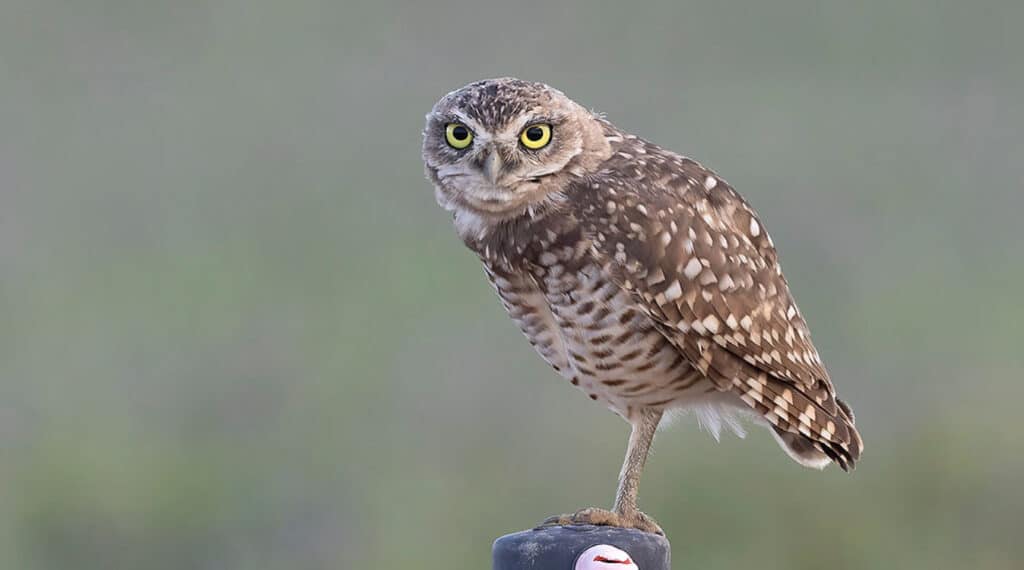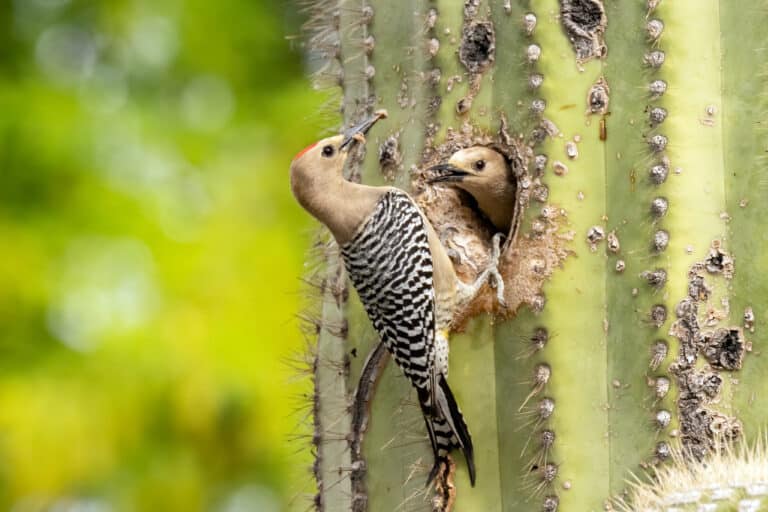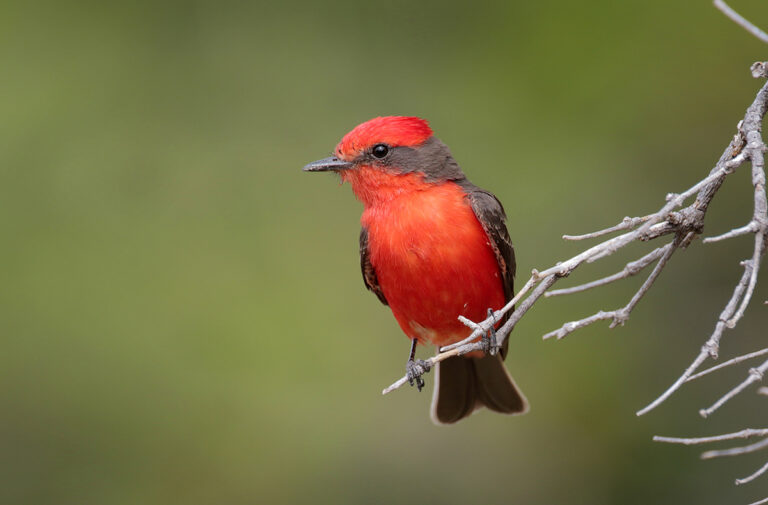My appreciation for Burrowing Owls began after frequently seeing a family comically loitering outside natural and human-made burrows at a Tucson Audubon habitat restoration site along the Santa Cruz River. The species then gained legend status in my mind years later during a Birdathon when a long-winged owl sprang up from a perch and snatched a bat right out of the night sky! They may be small and cute, but these birds are fierce hunters, night and day—unique among North American owls. It seems females catch more insects, mostly during the day, and males take more vertebrates, mostly at night. Burrowing Owls also store extra food to ensure a good supply for the breeding season—more than 200 rodents in a burrow is not unheard of!
The Burrowing Owl is a wide-spread ground dwelling owl found in grasslands, deserts, and other arid open areas from Canada to the very tip of South America. They utilize burrows created by prairie dogs, ground squirrels, badgers, or tortoises, among others, and will readily take to human structures such as agricultural culverts and ditch edges. Some readers may recall the famous Safelite AutoGlass parking lot owl family in Tucson! Burrowing Owl populations have declined sharply across much of their range leading to reintroduction programs, the creation of artificial nest burrows, and habitat and species protective legislation.
Fun facts: Burrowing Owls carpet the openings to their burrows with animal dung that attracts insects that they then eat! They may also deposit cigarette butts, bottle caps, and other trash at the entrance, possibly signifying that the burrow is occupied. Young owls give a “rattlesnake rasp” call from the burrow that mimics a snake rattle and may deter predators.
You can find Burrowing Owls in Southeast Arizona year-round where most are non-migratory. Even in the northern populations of Canada where most birds are migratory, some owls do winter in their breeding areas—individuals seem to make yearly decisions whether or not to migrate. Look for owls in the Santa Cruz Flats, Marana farm fields, Las Cienegas grasslands, and the Sulphur Springs Valley.
Image by Ned Harris




